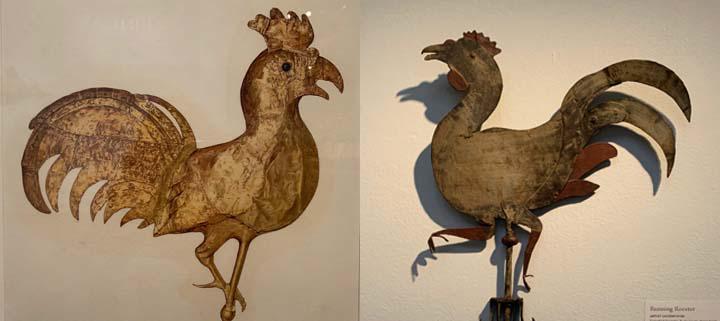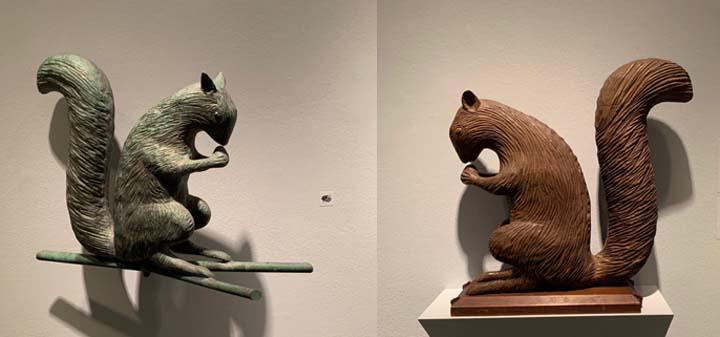American Weathervanes: Art of the Wind
Because weathervanes, like covered bridges, dotted the rural New Hampshire landscape of my childhood, I never gave them much thought; until I wandered into the exhibition currently on view at the American Folk Art Museum. Organized by Robert Shaw, an independent curator, and Emelie Gevalt, the museum’s curator of folk art, American Weathervanes: The Art of the Wind brings together around 60 examples from private collections and other museums along with AFAM.
The vanes, made between the 1780s and 1914, are accompanied by a number sculpted wooden molds that were used to make the metal castings—usually copper—that became the wind markers. While the manufacturers regarded their work as industry, their highly imaginative inventions can be seen as the first examples of American sculpture. Much like ship’s figureheads, trade signs and shop figures, skilled artists were hired to create the original wood carvings that served as prototypes.
The steps in the manufacturing process were many, and lent themselves to local cottage industry in the early years. For example, the original wood carving (such as the squirrel eating a nut [above right] would then be given to an iron founder, who might also be the local blacksmith, to make a sand casting that was then used to create a reusable iron mold [above left].In the final stages, a metal worker would hammer sheets of copper over the mold into hollow-bodied weathervanes, in two parts that were finally soldered together. The directional, marking the points on the compass, would be added last.
The Angel Gabriel [below] was made in 1840 for the Universalist Church of Newberryport, Massachusetts. Crafted in gold leaf over iron and copper, this iconic example celebrates the religious motifs of weathervanes that have survived since the Middle Ages in Europe. When it was taken down from its perch, a paper note identifying its makers was found in the horn.
Strikingly modern in its bold and simplified form, the Sea Serpent [above] was included in the seminal 1974 exhibition, The Flowering of American Folk Art, which was, in a sense, a history of the American passion for folk art. The interest in collecting works by primarily unidentified artists working outside the context of academic traditions began in the early 20th century, around the time that the demand for new weathervanes waned. American Weathervanes: The Art of the Wind is an in-depth exploration of the many aspects of American Folk Art through a single subject. Along with weathervanes, carvings and molds, the exhibition also includes photographs and. video, along with drawings and and letter, folded into Boston newspapers from June, 1839 identifying the makers of a weathervane made for a hotel owner in Roxbury, Massachusetts [below, in a photo courtesy of AMFA].
American Weathervanes: The Art of the Wind continues through Sunday, January 2 at the American Folk Art Museum, 2 Lincoln Square [Broadway at 66th Street), NY, NY Info All photos © Peggy Roalf except as noted








